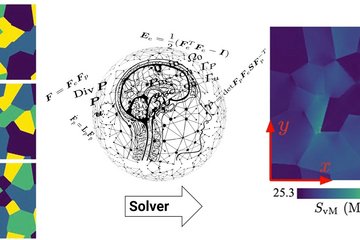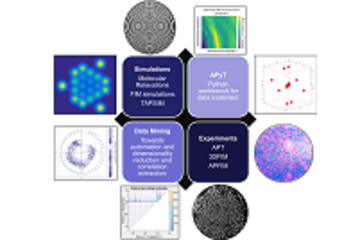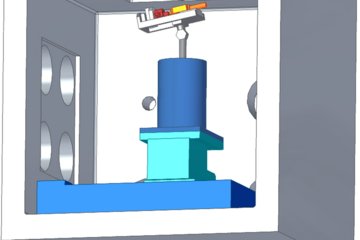Spin-lattice coupling in the high temperature phase of magnetic materials
At finite temperatures lattice vibrations and magnetic fluctuations are coexisting. To study potential coupling effects, a method is required, which considers both, the spin and the lattice degrees of freedom, simultaneously. We develop and implement such a method by combining atomistic spin dynamics with ab initio molecular dynamics.
The paramagnetic phase of magnetic materials is described by the absence of any long range order of the magnetic moments accompanied by zero total magnetization. As the magnitude of the local magnetic moments is kept for many magnetic materials even in the high temperature range, an influence of the magnetic quantities on physical properties, as well as a coupling with lattice vibrations, has been supposed [1,2].

To study potential coupling effects at finite temperatures, we combine atomistic spin dynamics with ab initio molecular dynamics (ASD-AIMD). In conventional spin dynamics calculations predefined magnetic exchange constants between neighboring atoms determine the trajectories of the spin directions in time. The deviation of the trajectories due to finite temperatures are modeled by an additional Gaussian white noise term.
In our ASD-AIMD approach the magnetic exchange constants are also predefined, but depend on the distance of the corresponding neighboring atoms. The distance is known from a former ab initio molecular dynamics calculation. Here, the forces on the atoms are obtained by an electronic structure calculation. As the actual magnetic state affects the electronic structure, the ASD spin state serves as constrain for the magnetic moments within this calculation.
With this method spin and lattice degrees of freedom are technically coupled. By applying the ASD-AIMD approach to CrN, we observe that spins of neighboring Cr atoms adjust their orientation depending on the distance between them. Furthermore, the mutual coupling counteracts a fast decay of the actual magnetic state. As a consequence, measurable physical properties are affected. In CrN we discover a significant reduction of phonon lifetimes slightly above the magnetic ordering temperature of approx. 300 K. It explains an anomalous temperature dependence of the thermal conductivity of CrN in its paramagnetic state, which was observed experimentally, but not understood before [3].












